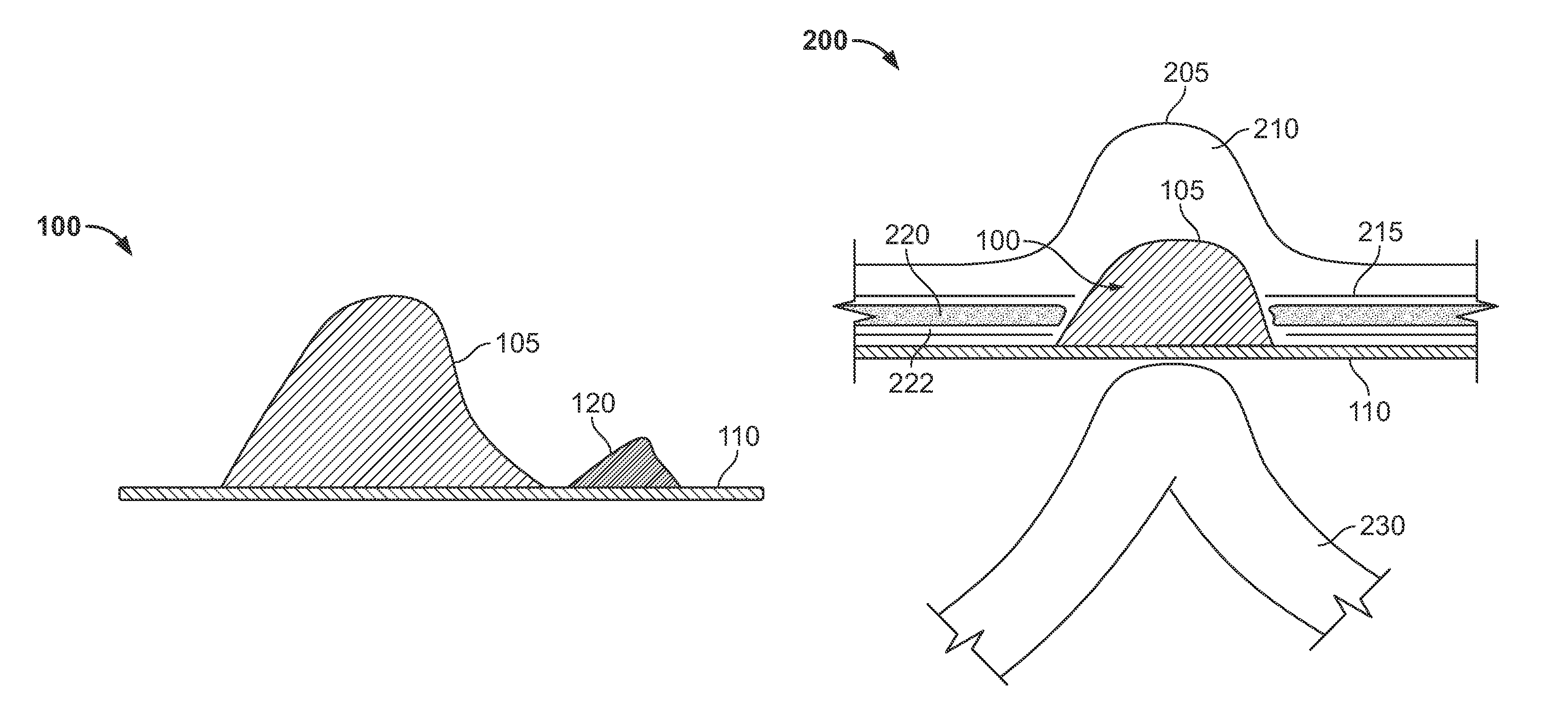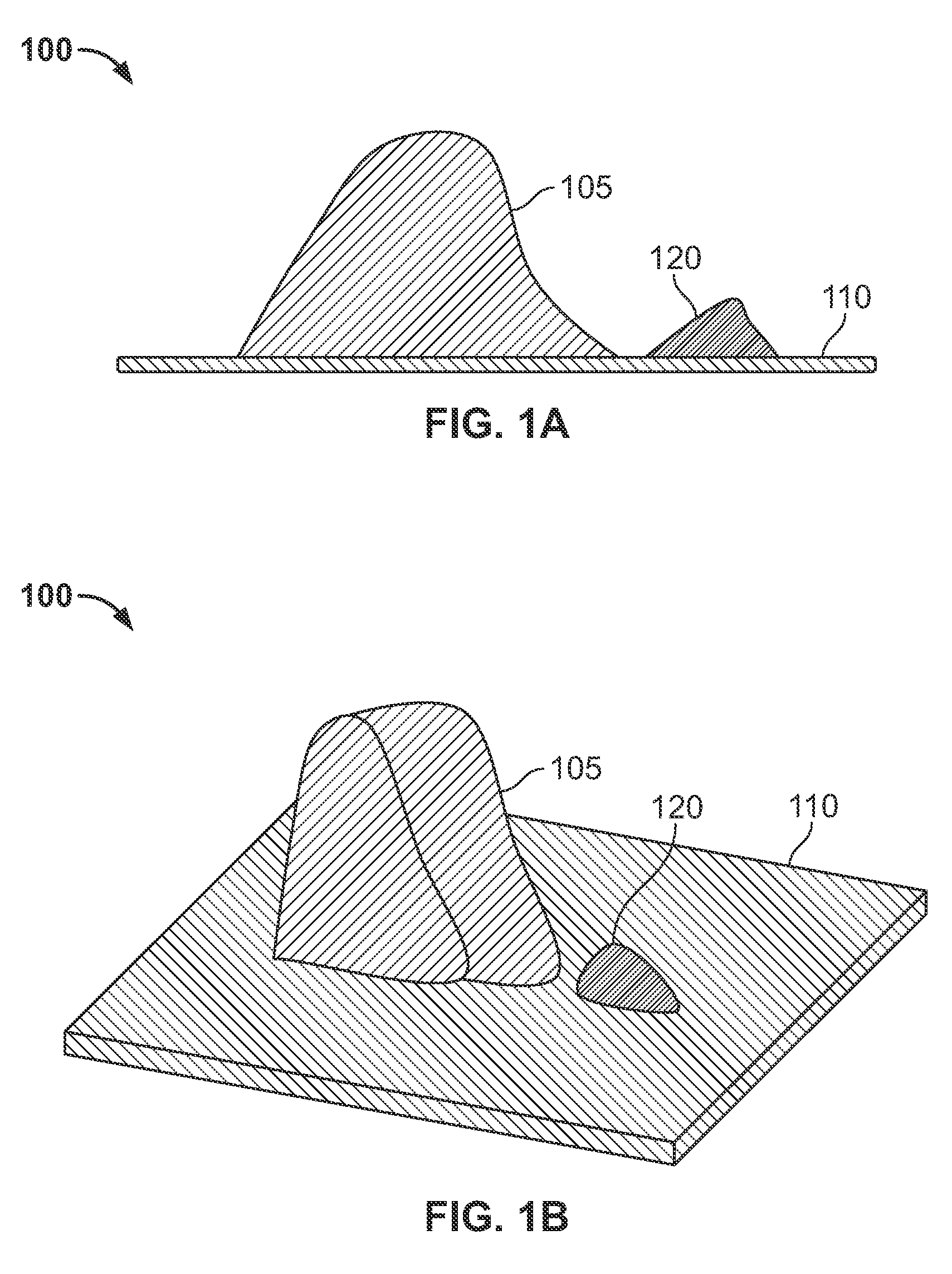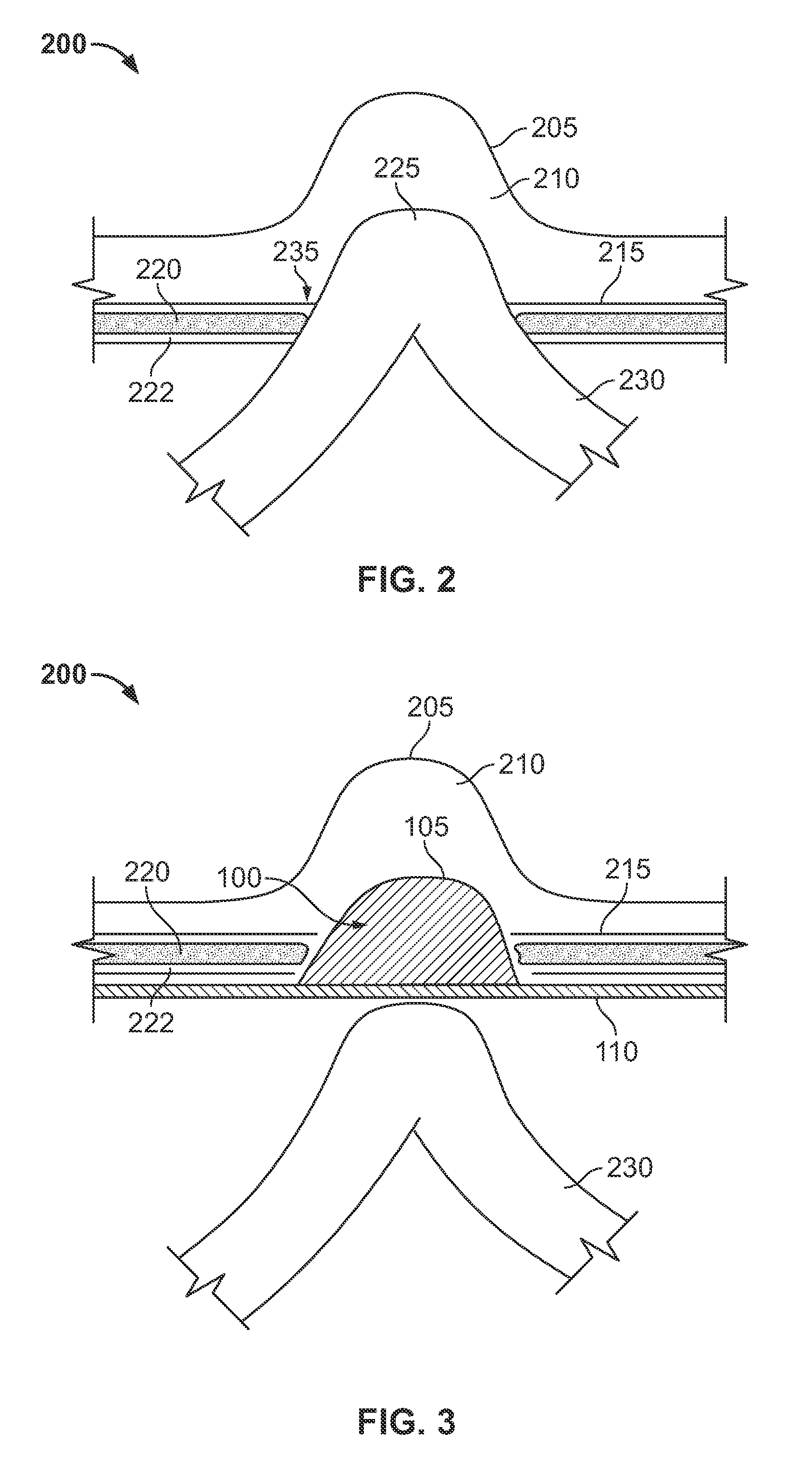Hernia mesh apparatus and method
a mesh and mesh technology, applied in the field of hernia mesh apparatus and method, can solve the problems of high failure rate of surgery, and inability to cure, and achieve the effect of convenient laparoscopic placemen
- Summary
- Abstract
- Description
- Claims
- Application Information
AI Technical Summary
Benefits of technology
Problems solved by technology
Method used
Image
Examples
example 1
[0032]The hernia mesh can be configured from “foam”. The mesh can be pressed down small enough to allow the mesh to be rolled up and deployed through a small laparoscopic port. Then the mesh is unrolled inside the inflated abdomen and fitted into the exposed hernia sac spaces. The foam described herein can be biocompatible, expansile over time, and bacteria resistant.
example 2
[0033]The hernia mesh disclosed herein can be configured from an expandable hydrogel, relatively flat when machined, but rapidly expanded when exposed to saline or water. The hydrogel is deposited on the mesh during manufacture in different thicknesses over the hernia defect areas. Once in the abdomen, the mesh is combined with water or saline, and the hydrogel expands, fitting into the hernia defect or defects. Hydrogel mesh is biocompatible, expansile over time, and bacteria resistant.
[0034]FIG. 6A illustrates a flow chart of logical operations depicting a method 600 of repairing a hernia defect by utilizing “foam” mesh, in accordance with the disclosed embodiments. As illustrated at block 605, the front portion of the mesh made of “foam” can be manufactured according to the hernia sac volumes of a patient. The hernia sac volume information can be obtained from a three dimensional map of CT scan. The mesh can be pressed, rolled, and inserted into the abdomen through a small laparo...
PUM
| Property | Measurement | Unit |
|---|---|---|
| diameter | aaaaa | aaaaa |
| volume | aaaaa | aaaaa |
| compressible | aaaaa | aaaaa |
Abstract
Description
Claims
Application Information
 Login to View More
Login to View More - R&D
- Intellectual Property
- Life Sciences
- Materials
- Tech Scout
- Unparalleled Data Quality
- Higher Quality Content
- 60% Fewer Hallucinations
Browse by: Latest US Patents, China's latest patents, Technical Efficacy Thesaurus, Application Domain, Technology Topic, Popular Technical Reports.
© 2025 PatSnap. All rights reserved.Legal|Privacy policy|Modern Slavery Act Transparency Statement|Sitemap|About US| Contact US: help@patsnap.com



